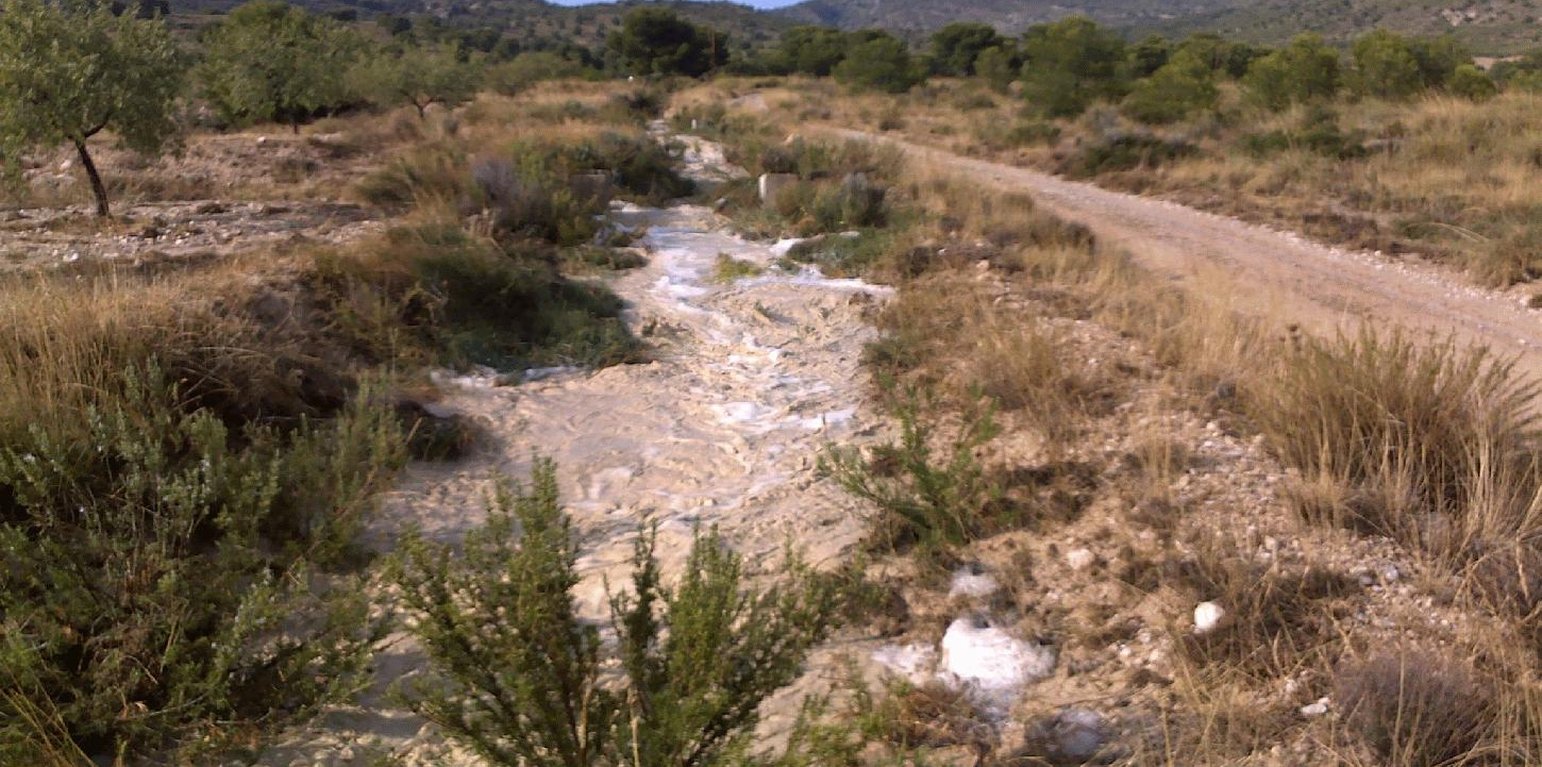



Water shortage is one of the most limiting factors for sustainable agriculture in large parts of SE-Spain. Part of the solution of this problem may come from the restoration of traditional water harvesting structures. Many of these structures were widely used in SE-Spain already during Arab and Roman times, and are also widespread in N-Africa and the Middle East. However, nowadays in Spain many of them are abandoned and forgotten. Here, we describe the technology of a small earthen- or stone- built bund that diverts flood water from intermittent streams towards cultivated fields with almond orchards and/or cereals. The diverted water will temporarily flood the fields and provide the crops with water. Depending on the slope gradient and the amount of water to be harvested, the fields are organised as single terraces, or as a staircase of terraces. On fields with gradients above ~3%, terraces are necessary to reduce the gradient and to retain the floodwater as long as possible. Water is diverted from one terrace to the next through small spillways in the terrace. The spillways can best be fortified with stones to prevent bank gully formation. The extra input of surface water can double the almond yield. The use of these water harvesting structures is only possible under certain environmental and topographic conditions. The cultivated fields should be at a relatively short distance from an intermittent stream (<~50m), and the stream should have a sufficiently large upstream contributing area to provide significant amounts of runoff water during rainfall events. With these systems, water can be harvested up to 8 times per year, mostly in spring and autumn during high intensity rainfall events. A well designed Boquera system may provide up to 550 mm of additional water, in areas with an average annual rainfall of 300 m.
Purpose of the Technology: The goal of this technology is to increase crop yield. In addition, these structures help to reduce the intensity of floods and reduce the damage caused by them by reducing runoff volume in intermittent streams.
Establishment / maintenance activities and inputs: Water harvesting requires the identification of a suitable location for the construction of a diversion structure. This requires assessment of expected water inflow, which can usually be based on simple field observation during rainfall events and based on local knowledge of land users. It is, however, important to consider whether there are activities upstream that possibly affect the water quality (e.g. farm animals) and to assess the implications the water harvesting might have downstream. Permission is required from the water authorities to construct any type of water harvesting structure. Such structures are built by creating a small bund (<1m height) in the centre or to the side of a stream. Depending on the size, the bund can be built with a shovel or a tractor. The water harvesting structure will require control and some maintenance after each important runoff event. When strengthened with concrete, maintenance will be reduced to approximately once every 5 years.
Natural / human environment: Soils are mostly of shallow to medium depth (20-60 cm), and slopes are gentle to moderate (5-15%). The climate is semi-arid with a mean annual rainfall around 300 mm. Droughts, centred in summer commonly last for more than 4-5 months. Annual potential evapotranspiration rates larger than 1000 mm are common.
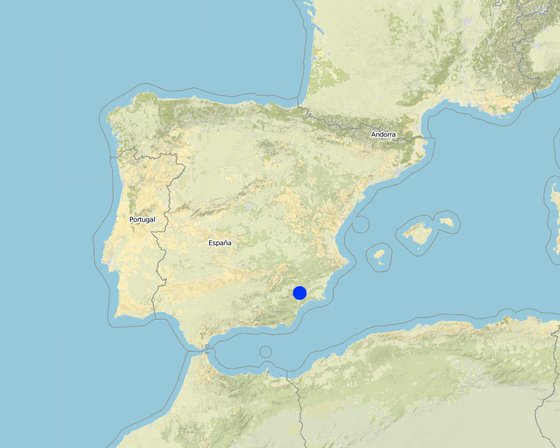
الموقع: Guadalentin catchment, Murcia, إسبانيا
عدد مواقع تنفيذ التقنيةالتي تم تحليلها:
انتشار التقنية: منتشرة بالتساوي على مساحة (approx. < 0.1 كم2 (10 هكتار))
في منطقة محمية بشكل دائم؟:
تاريخ التنفيذ: منذ أكثر من 50 عامًا (تقليدي)
نوع التقديم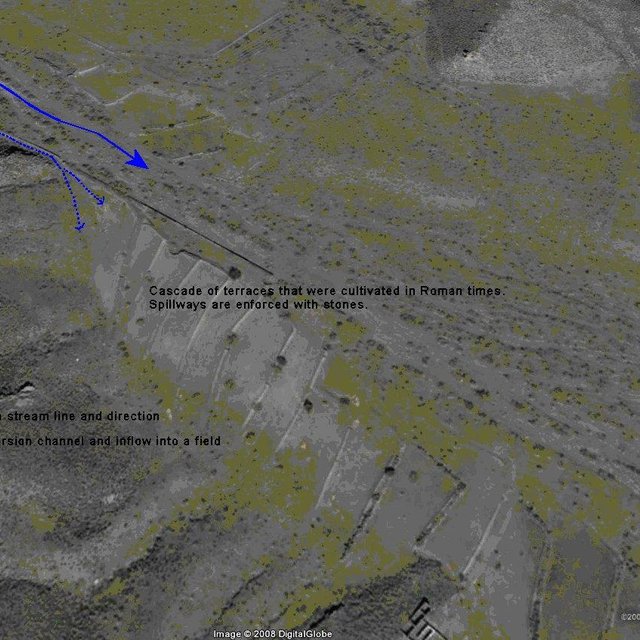
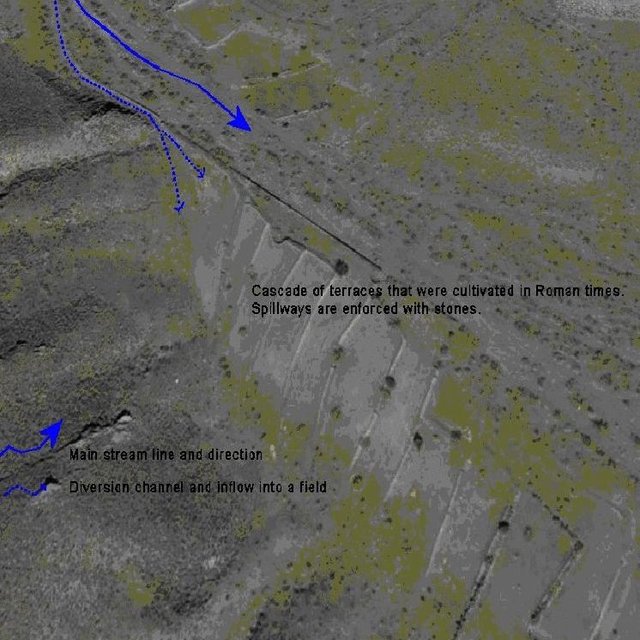




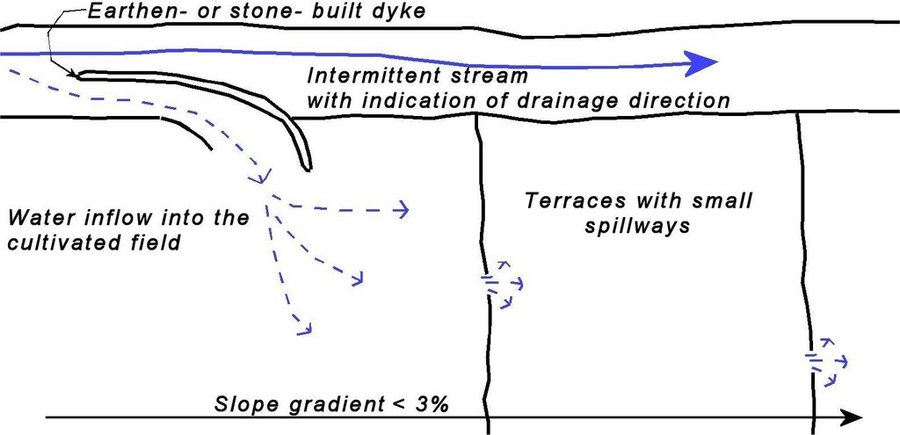
| تحديد المدخلات | الوحدة | الكمية | التكاليف لكل وحدة (EURO) | إجمالي التكاليف لكل مدخل (EURO) | % من التكاليف التي يتحملها مستخدمو الأراضي |
| العمالة | |||||
| Labour | 5 meter dyke | 1,0 | 150,0 | 150,0 | 100,0 |
| معدات | |||||
| Machine use | 5 meter dyke | 1,0 | 350,0 | 350,0 | 100,0 |
| مواد البناء | |||||
| Concrete | 5 meter dyke | 1,0 | 400,0 | 400,0 | 100,0 |
| إجمالي تكاليف إنشاء التقنية | 900.0 | ||||
| إجمالي تكاليف إنشاء التقنية بالدولار الأمريكي | 1'428.57 | ||||
| تحديد المدخلات | الوحدة | الكمية | التكاليف لكل وحدة (EURO) | إجمالي التكاليف لكل مدخل (EURO) | % من التكاليف التي يتحملها مستخدمو الأراضي |
| العمالة | |||||
| Labour | 5 meter dyke | 1,0 | 4,0 | 4,0 | 100,0 |
| معدات | |||||
| Machine use | 5 meter dyke | 1,0 | 12,0 | 12,0 | 100,0 |
| مواد البناء | |||||
| Concrete | 5 meter dyke | 1,0 | 25,0 | 25,0 | 100,0 |
| إجمالي تكاليف صيانة التقنية | 41.0 | ||||
| إجمالي تكاليف صيانة التقنية بالدولار الأمريكي | 65.08 | ||||
Depending on the amount of water harvested yield may be the same or increase slightly
Implementation of dykes is considered relatively expensive
Water extraction by a water harvesting may cause less water at downstream locations, whihc may cause conflicts
during Roman and Arab times when most structures were operative they increased significantly the production. Nowadays, most of them are abandoned. However, those that are operational do cause increased crop yields.
For small flood events only
Possibly a small effect
If various structures are present in a stream and only for relatively low intensity events